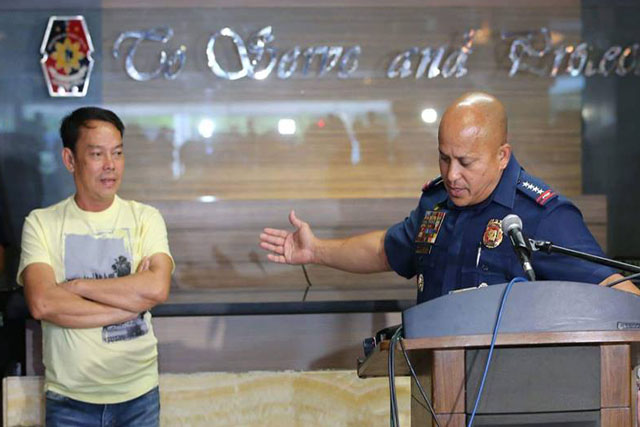Ballet Manila's dual appeal / Rodriguez-Dizon book launch
Ballet Manila’s “Maligayang Christmas” at Aliw Theater had a dual appeal: to the sophisticates the balletomanes and to the masses.
The concert opened with Pas d’action from Act 2 of La Bayadere. The star quality of Hanah Oh, with her verve and clarity of movement, enhanced by a charming smile, was obvious. Harold Salgado proved a strong partner.
Zaira Cosico, Abby Cruz, Jennifer Olayvar and Czarina Villegas manifested grace, precision, elegance standard qualities of Ballet Manila’s ballerinas. Nazer Salgado and Manny Febra exhibited velocity, energy and ballon standard qualities of its danseurs.
In Diane et Acteon, from the ballet Esmeralda, Sei Hee Hong, goddess of the hunt Diane falls in love with the brave hunter Acteon. Sei was light and airy; Alfren Salgado, Acteon, established himself (arguably) as the most agile danseur with his astonishing feats multiple pirouettes, fish dives, Jetes and soft landings.
As expected, Lisa Macuja Elizalde’s magnetism, authority and articulate phrasing arrested attention in Manuel Molina’s Light after she parted the curtains for her entrance. Rudy de Dios and Romeo Peralta followed suit, powerfully dancing in the dramatic pas de trois. The Prayer rendered by singers Celine Dione and Andrea Bocelli as well as the dancers’ languid, measured movements created and sustained the choreography’s deeply reverential air and solemnity. Brief though the number was, Lisa shone as the jewel in the diadem.
Irene Sabas-Gower’s Green, except for its title, did not specifically express, through the choreography, “respect for the environment” or delineations of earth, water, air and fire. What the audience highly admired were the exquisite dancing of Mylene Salgado, and the virility and vigor of Nazer Salgado. The fluid, fluent, disciplined ensemble — Jennifer Olayvar, Sofia Peralta, Abigail Cruz, Harold Salgado and Manny Febra considerably enriched the performance.
Indubitably, the foregoing portion’s vas appeal to ballet lovers was the nearly perfect classic dancing they had wished to see.
The saying goes: “Too many cooks spoil the broth.” Kutitap, choreographed by no less than nine dancers, is “a one-act all original Filipino Christmas ballet inspired by the combined stories of the Little Match Girl, Romeo and Juliet and a typical Pinoy family Christmas with an OFW parent returning for the holiday season. Local Christmas traditions of Simbang Gabi, pasalubong, giving, caroling, and Noche Buena are all depicted around the twin stories of a poor boy-rich girl romance, and an angel in disguise on a secret mission to find good people in the world.”
A dominant figure, an over-all choreographer could have unified the various episodes together into an organic whole, with one episode leading to the next and the next. What the audience saw was episodic ballet, and a mish-mash of styles and incongruities.
To be sure, there were opportunities for clever choreography per se e.g., the lame man maneuvering his crutch; the transients dancing with their traveling bags at the airport; the opening scene with the pedestrians, vendors, street children engaging in impressively invigorating, vigorous, unified action to powerful, overwhelming percussive rhythms.
Laborers dropping in on a ballet studio and dancing with the ballerinas (!) seemed most unlikely to happen. However, others might have construed the idea as original, innovative, even brilliant! The native Christmas tradition must have struck a sympathetic chord in the hearts of the masses, as well as the sight of a flirtatious gay dressed as a woman and of a fluttering angel with wings spread out, the latter to hearty applause.
Popular appeal was presumably aimed at by the choreographers to “bring ballet closer to the hearts of the Filipino masses,” Kutitap certainly achieved its aim with success.
* * *
Spanish journalist Jose R. Rodriguez and Pampango historian Dr. Lino Dizon will launch “Cruceiro — Spanish Galicia at some crossroads in Philippine History and Culture” at Café Juan, Holy Angel U. Angeles City, on Dec. 13.
Using as motif the Cruceiro, a tall, granite cross unique to Galicia, the book “features various facets of history and culture where Galician influence has been enormously felt.”
A Galician himself, Rodriguez has spent more than a quarter of a century in the Philippines which he considers his second home, and where he was bureau chief of the Spanish news agency EFE in the mid-80s and later Instituto Cervantes director.
Dr. Dizon is a Hispanophile who teaches at the Tarlac State U. and is historical consultant at the Holy Angel U.
Through the perspective of local and regional studies, the Cruceiro authors hope to foster enduring cultural relations between their countries.
- Latest
- Trending





























